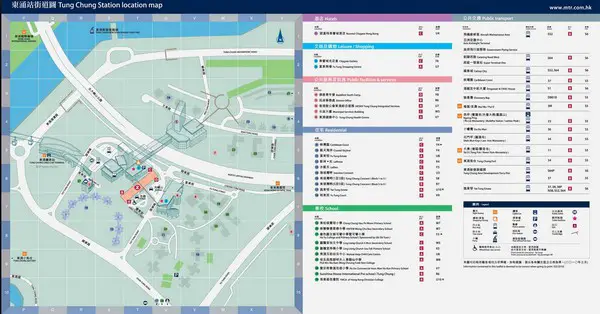
Whether you’re a seasoned traveler or a newbie, reading a map is an essential skill that can help you navigate unfamiliar territories with ease. Maps come in various forms, from the conventional printed map to digital maps like Google Maps, and understanding how to read them is crucial for successful travel planning and exploration.
Table of Contents
Importance of map reading
Map reading is an essential skill that allows you to interpret and navigate through a visual representation of a physical space or location. Here are some reasons why map reading is important:
Navigation
Maps are your best friend when you’re in an unfamiliar place. If you’re exploring a new city, hiking in the wilderness, or navigating a complex transportation network, you’ll need a map.
Planning
Trips and excursions can also be planned with maps. You can tell the distance between two points, the topography of the area, and where important landmarks and features are by looking at a map.
Safety
You need a sense of where you are and where you’re going when you’re exploring the outdoors. Maps help you avoid getting lost, and they can also help you identify potential hazards.
Education
Using maps to learn about geography, history, and culture can be a great educational tool. Studying maps can help you understand how people have shaped the landscape over the years.
Types of maps and their pros and cons
There are several types of maps available for use, each with its own advantages and disadvantages.
Conventional printed maps
Conventional printed maps, like road maps or topographic maps, have been in use for centuries and are still widely used today. Here are their pros and cons:
Pros:
- Large areas can be shown on a single map, allowing for easy comparison and planning.
- Printed maps can be used without the need for an internet connection or electronic device.
- They provide a detailed representation of the terrain and geography of an area.
Cons:
- Printed maps can be outdated, and new editions may not be released regularly.
- They can be cumbersome to carry around and difficult to fold back up once unfolded.
- They can be challenging to read in low-light or dark environments.
Digital maps
Digital maps, like those provided by Google Maps, Apple Maps, or other navigation apps, are becoming increasingly popular. Here are their pros and cons:
Pros:
- Digital maps are constantly updated, making them more accurate than printed maps.
- They can be easily customized to show different types of information, such as traffic or public transportation.
- They can be used with a GPS-enabled device to provide real-time navigation.
Cons:
- They require an internet connection or mobile data to function properly.
- The maps can be more difficult to read due to the smaller screen size of electronic devices.
- The batteries of electronic devices used to display digital maps can die, leaving the user without a map.
Interactive maps
Interactive maps, such as those provided by National Geographic or other websites, are often used for educational or informative purposes. Here are their pros and cons:
Pros:
- They can provide more detailed information than conventional or digital maps, such as cultural or historical context.
- They are often more visually appealing and engaging than other map types.
- They can be customized to show specific types of information, such as temperature or rainfall.
Cons:
- They can be slower to load and less responsive than other types of maps.
- They often require an internet connection to function properly.
- They can be less practical for planning a trip or navigating a new area.
Tips on how to read your location map
Understand the key/legend
The key/legend is an essential part of any map, and it’s essential to understand it before you start reading the map. It tells you what the symbols, colors, and lines on the map represent. For instance, on a conventional printed map, the legend might tell you that a red line represents a highway, while a blue line represents a river.
On a digital map, the key is often represented by an icon in the corner of the screen. Understanding the key will help you interpret the map correctly.
Identify North
Before you start reading the map, it’s crucial to identify which way is north. You can do this by looking for the compass rose on the map, which usually has a north arrow pointing toward the top of the page. Knowing where north is will help you orient yourself and navigate in the right direction.
Understand the scale
The scale on a map is a ratio that tells you the relationship between the map’s size and the actual size of the area it represents. For instance, a map with a scale of 1:100,000 means that one unit on the map represents 100,000 units in the actual world. Understanding the scale is essential to help you estimate distances and plan your route.

Pay attention to contour lines
Contour lines on a map are used to represent changes in elevation, and they’re essential for understanding the terrain. The closer the contour lines are to each other, the steeper the terrain is. Conversely, the farther apart the lines are, the flatter the terrain is.
Read the symbols and labels
Maps are often filled with symbols and labels that represent various features, such as mountains, rivers, roads, and landmarks. Understanding these symbols and labels will help you identify where you are on the map and navigate more effectively.
Plan your route
Whether you’re using a conventional printed map or a digital map like Google Maps, planning your route before you start your journey is crucial. Take the time to study the map and identify the best route to your destination, based on the terrain, distance, and landmarks.
Use landmarks for orientation
When navigating with a map, using landmarks can be helpful in orienting yourself. Landmarks can be anything from a mountain range, a river, or a tall building. Once you’ve identified a landmark, you can use it to orient yourself and navigate more effectively.








